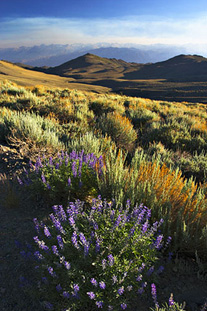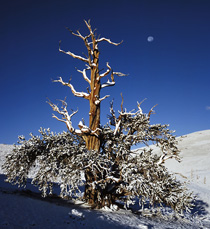
© Eric Frisbee - class alumni
Landscape-Mindscape: The White Mountains and Bristlecone Pines
Join us for this six-day workshop in one of the most spectacular landscapes in the west — the high-altitude plateaus of the White Mountains. Situated near the California-Nevada border, the Whites are home to the largest concentration of bristlecone pines in the world, including both the largest and oldest individual trees. Working among living organisms that are over 4,000 years old is indeed a unique experience. And the landscape is equally amazing. The gently rolling hills and plains of the summit ridge drop off precipitously to aspen-filled canyons and meadows and riparian corridors on the east side of the range. The juxtaposition of basalt and dolomite soils creates a beautiful color palette set against the deep blue high-altitude skies. It is an awesome place.
It can be difficult to work in this environment. There are no public facilities, and only one dry campground that is twelve bone-jarring miles from the upper bristlecone groves. The nearest motel is one hour away in Big Pine. But our workshop will base out of the newly renovated UC research station at Crooked Creek, conveniently located between the two main bristlecone groves at an elevation of 10,100 feet. The facility consists of several log buildings that house dorms and a kitchen, dining room, classroom, and laboratory. Amenities include electricity, hot water (showers), wireless Internet access and delicious meals prepared by White Mountain Research Station staff.

© Douglas Campbell - class alumni
The workshop will provide a balanced mix of instruction, group work in the field, ample time for personal work, and freewheeling discussions around the campfire. The curriculum is based on a thorough examination of the fundamentals of photographic craft. These are the basic processes we use to form an image, regardless of whether we are working with film or digital. How do we evaluate and control the lights and darks and colors (exposure)? How do we explore the relationship of objects in the image to find the strongest composition? We will provide information that allows the photographer to “evolve” the image so that it becomes a powerful personal expression, as opposed to “rules” that dictate the outcome.
